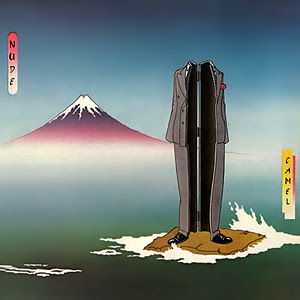I think it was in 2009, I saw Van Der Graaf Generator in concert in Quebec. A good concert, probably the concert I've attended that was the most spiced with marijuana clouds from the crowd's puffing. It was a fog. At that time, the band was a fairly new acquaintance to me, and I was delighted with the opportunity to see them live. According to Wikipedia, the group has existed 1967-1972, 1975-1978 and 2005-. The singer Peter Hammill has over the years made a large number of solo albums, Sitting Targets was his tenth.
It's a good album, even though the sound is a bit uncharted and primitive. Hammill sings in a rather dramatic way, which characterizes the songs, they all have a touch of darkness. Even a song like My Experience, which in another setting could be a dazzling pop hit on the top ten, gets an underlying dramatic current. Sometimes it sounds a little like Peter Gabriel, and of course as Van Der Graaf Generator, that can probably not be avoided. The music is described in most places as Art Rock, and it's a suitable label.
Sitting Targets is the only record I have with Hammill, so I can't compare with his other albums. But it contains a lot of quality, the vast majority of songs have something that makes them interesting and catchy. And what you usually describe as fillers, generally shines with its absence, although a few songs would get the 'Skip' treatment if it had been a CD. It's overall quite uptempo, but the beautiful ballad Ophelia and the B-side's Stranger Still balance the album with calmer atmospheres. Thanks to its dramatic and dark character, the album requires some attention, it's nothing I would usually play as subtle background music. Maybe a new mix or rerecording of the album would be a good thing, since I'm not a real friend of the sound. Nevertheless, a good album that can be recommended as a Christmas gift to someone close.
Tracklikt
Side A
1. Breakthrough - 3:55
2. My Experience - 3:14
3. Ophelia - 3:09
4. Empress's Clothes - 4:02
5. Glue - 3:40
6. Hesitation - 4:05
Side B
1. Sitting Targets - 5:21
2. Stranger Still - 4:55
3. Sign - 3:45
4. What I Did - 3:37
5. Central Hotel - 4:41












































